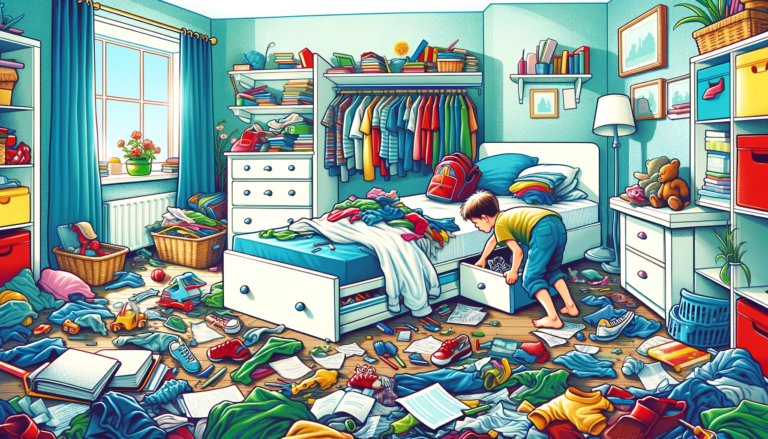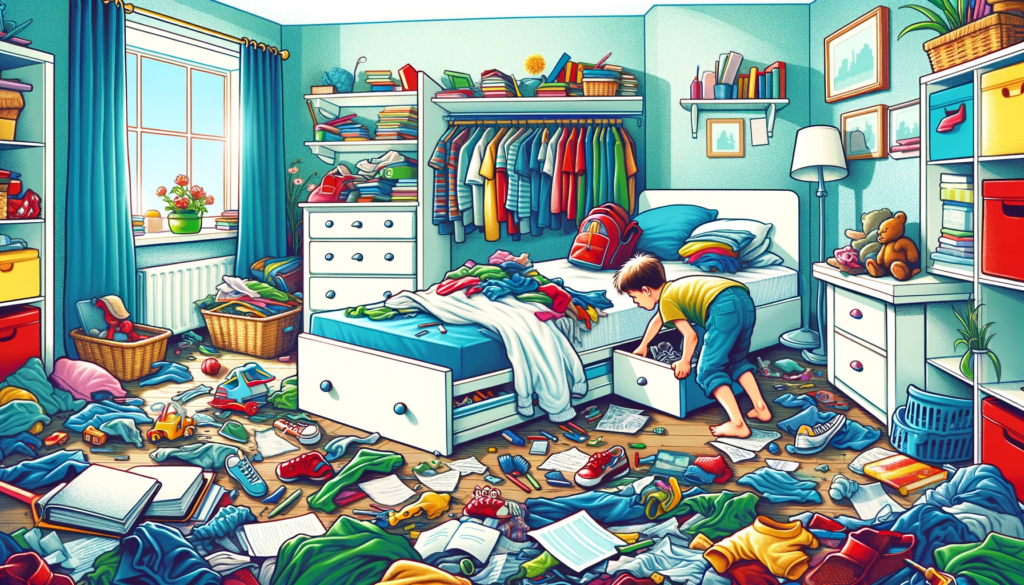Where in the Home? A1
- Home
- »
- English Teaching Resources
- »
- A1 – Elementary
- »
- Where in the Home? | A1
This is a free A1 elementary level English reading lesson about household items. It includes the reading and reading comprehension exercises in 4 different formats together with the answer keys and explanations.
- True/False questions
- Multiple choice questions
- Short answer questions
- Multiple choice cloze exercise

Where in the Home?

Table of Contents
Where in the Home?
John has a problem. He lost his glasses. He looks in the kitchen. No glasses there.
He goes to the living room. He searches on the table. Glasses are not there. He looks under the chair. Still no glasses. John feels sad.
He walks to his bedroom. He looks under the bed. No glasses there either. John sits on the bed. He thinks hard.
Where are his glasses? He touches his head. Oh! The glasses are on his head! John laughs. He found his glasses.
CEFR Level Card
General Level: A1.5
Vocabulary: A1.0
Verb Forms: A1.0
Sentences: A1.2
Vocabulary
either ADV A2 x1
Definition (En):
- after a negative statement used as an intensive meaning something like `likewise’ or `also’
search VERB A2 x1
Definition (En):
- the activity of looking thoroughly in order to find something or someone
n. an investigation seeking answers
n. an operation that determines whether one or more of a set of items has a specified property
n. the examination of alternative hypotheses
touch VERB A2 x1
Definition (En):
- the event of something coming in contact with the body
n. the faculty by which external objects or forces are perceived through contact with the body (especially the hands)
n. a suggestion of some quality
n. a distinguishing style
Phrases
PHRASE | COUNT | SENTENCES |
be on someone’s head | 1 |
|
on the table | 1 |
|
Reading Comprehension Exercises
True / False
- John lost his hat.
- John found his glasses in the kitchen.
- John finds his glasses under his bed.
- The glasses were on the living room table.
- John is happy when he can’t find his glasses.
- John finds his glasses in the end.
- John’s glasses are above his eyes.
Multiple Choice
1) Where does John not look for his glasses?
A) On his head
B) In the kitchen
C) Under the bed
D) On the table
2) Why does John feel sad?
A) Because he is tired
B) Because he is hungry
C) Because he lost his glasses
D) Because it is raining
3) What does John do after he sits on the bed?
A) He calls his friend
B) He thinks hard
C) He goes to sleep
D) He eats dinner
4) How does John find his glasses at the end?
A) He buys new glasses
B) Someone tells him
C) He sees them on a mirror
D) He touches his head
5) Where were the glasses in the end?
A) In the kitchen
B) Under the bed
C) On his head
D) Under the chair
6) Why does John laugh at the end?
A) He hears a funny joke
B) He finds his glasses
C) He watches a funny movie
D) His friend makes him laugh
7) What was John doing in the living room?
A) Having dinner
B) Sleeping
C) Searching for his glasses
D) Watching TV
Short Answer
- Where does John first look for his glasses?
- What does John do after searching the living room?
- How does John feel when he can’t find his glasses?
- Where were the glasses found?
- What is John’s reaction when he finds his glasses?
- Does John find his glasses in the living room?
- What does John do on the bed before finding his glasses?
Multiple Choice Cloze
John has a ___1___. He ___2___ his glasses. He looks in the kitchen. No glasses there.
He goes to the ___3___ room. He searches on the table. Glasses are not there. He looks under the chair. Still no glasses. John feels ___4___.
He walks to his ___5___. He looks under the bed. No glasses there either. John sits on the bed. He thinks ___6___.
Where are his glasses? He touches his ___7___. Oh! The glasses are on his head! John laughs. He found his glasses.
1) A. problem B. answer C. question D. glass
2) A. finds B. lost C. looks D. wants
3) A. living B. bed C. kitchen D. dining
4) A. happy B. angry C. sad D. surprise
5) A. kitchen B. bedroom C. bathroom D. hallway
6) A. softly B. hard C. quickly D. slowly
7) A. hand B. head C. nose D. ear
Exercise Answers
True / False Answers
- False
Explanation: The text says John lost his glasses, not his hat.
(“John has a problem. He lost his glasses.”)
- False
Explanation: The text tells us there are no glasses in the kitchen.
(“He looks in the kitchen. No glasses there.”)
- False
Explanation: John did not find his glasses under the bed because the text says there were no glasses there.
(“He looks under the bed. No glasses there either.”)
- False
Explanation: The text confirms that the glasses were not on the table in the living room.
(“He searches on the table. Glasses are not there.”)
- False
Explanation: John feels sad when he cannot find his glasses, which means he is not happy.
(“John feels sad.”)
- True
Explanation: The text ends with John finding his glasses, so this statement is true.
(“He found his glasses.”)
- True
Explanation: If the glasses are on his head, they are above his eyes. This statement is true.
(“Oh! The glasses are on his head!”)
Multiple Choice Answers
- A
Explanation: John did not realize to look on his head until the end.
(“He looks in the kitchen. No glasses there.
He goes to the living room. He searches on the table. Glasses are not there. He looks under the chair. Still no glasses. He walks to his bedroom. He looks under the bed. No glasses there either.”)
- C
Explanation: John feels sad because he cannot find his glasses.
(“He lost his glasses. He looks in the kitchen. No glasses there.
He goes to the living room. He searches on the table. Glasses are not there. He looks under the chair. Still no glasses. John feels sad.”)
- B
Explanation: After sitting on the bed, John thinks hard about where his glasses could be.
(“John sits on the bed. He thinks hard.”)
- D
Explanation: John finds his glasses by touching his head and feeling them there.
(“He touches his head. Oh! The glasses are on his head!”)
- C
Explanation: The glasses were on John’s head all along.
(“Oh! The glasses are on his head!”)
- B
Explanation: John laughs because he finally found his glasses.
(“John laughs. He found his glasses.”)
- C
Explanation: John was searching for his glasses in the living room.
(“He goes to the living room. He searches on the table. Glasses are not there.”)
Short Answer Answers
- In the kitchen.
Explanation: The first place John looks for his glasses is mentioned directly in the text.
(“He looks in the kitchen.”)
- He goes to his bedroom.
Explanation: After searching the living room, the text says that John walks to his bedroom.
(“He walks to his bedroom.”)
- Sad.
Explanation: The text directly states that John feels sad because he can’t find his glasses.
(“John feels sad.”)
- On his head.
Explanation: The text reveals the location of the glasses when John touches his head.
(“Oh! The glasses are on his head!”)
- He laughs.
Explanation: The text shows that John laughs when he finds his glasses.
(“John laughs.”)
- No.
Explanation: The text explicitly states that the glasses are not in the living room.
(“Glasses are not there.”)
- Thinks hard.
Explanation: The text describes John sitting on the bed and thinking hard before finding his glasses.
(“He thinks hard.”)
Multiple Choice Cloze Answers
- A
Explanation: He has a problem, not an answer or a question. ‘Glass’ is not the right form.
- B
Explanation: Past of ‘lose’ is ‘lost’. Other options do not fit grammatically.
- A
Explanation: The text mentions the ‘living room’ not the other places in this instance.
- C
Explanation: The text says he feels sad, because he cannot find his glasses.
- B
Explanation: He walks to his bedroom, not to other parts of the house mentioned here.
- B
Explanation: The text says he thinks hard, meaning he is thinking a lot.
- B
Explanation: The text says the glasses are on his head.
Craft your own reading lessons in minutes
On Cathoven, you can create readings and exercises tailored to specific vocabulary, grammar points, and proficiency levels, all within minutes.

